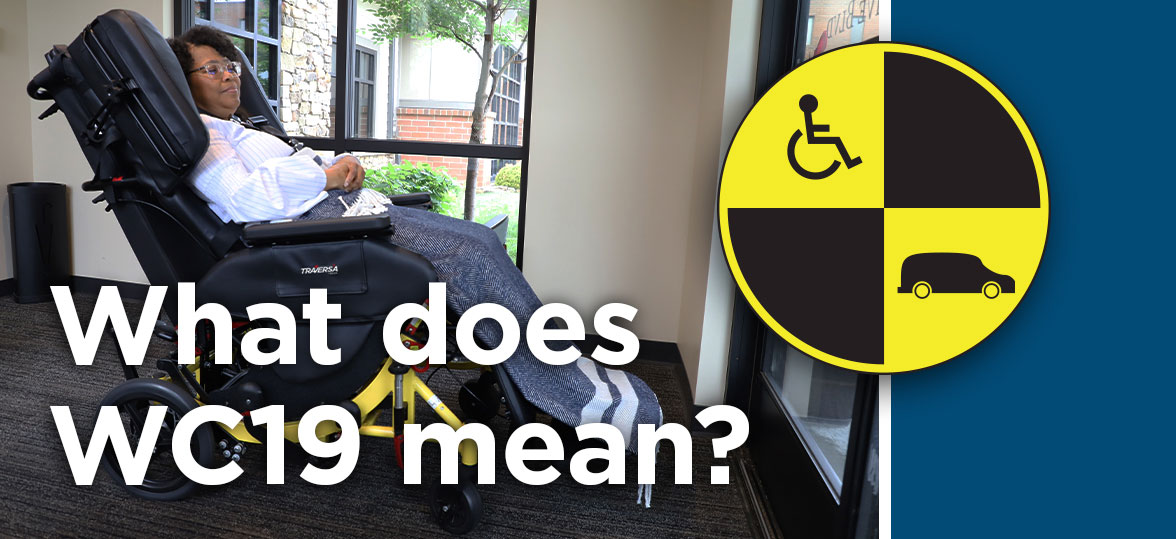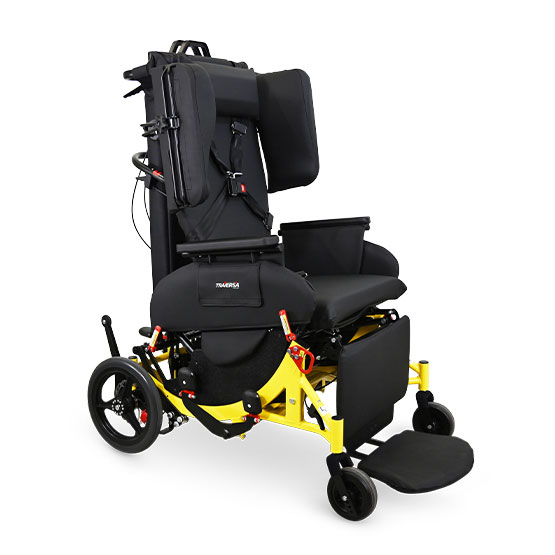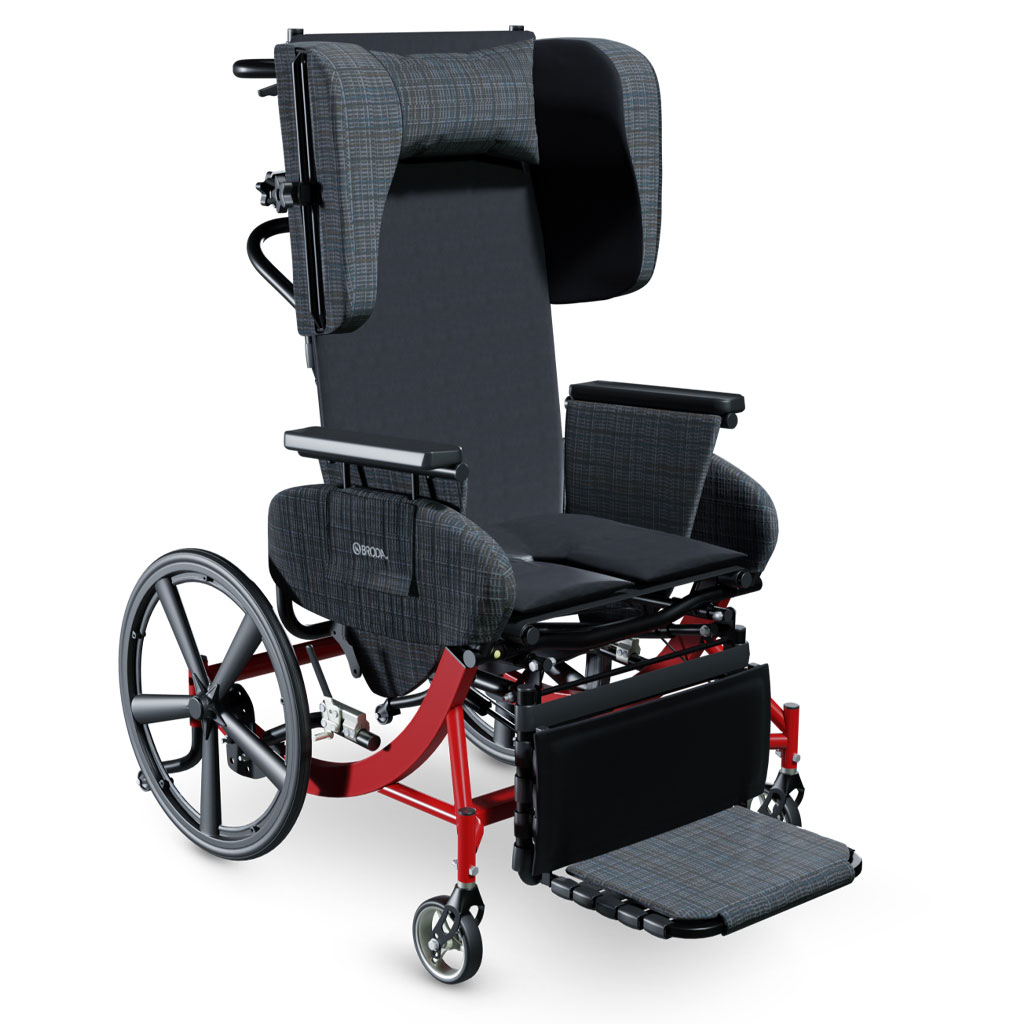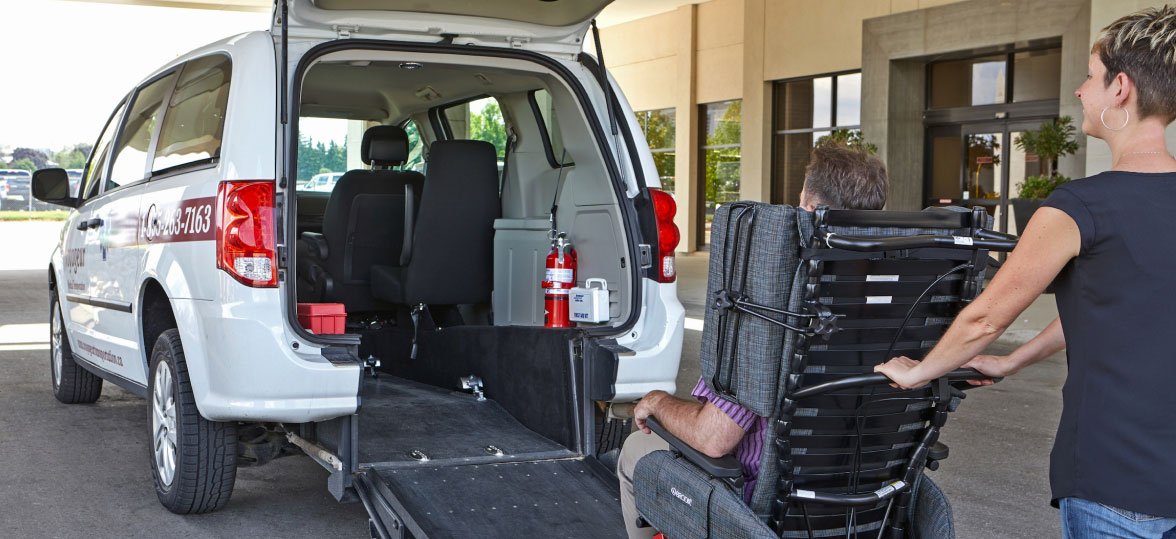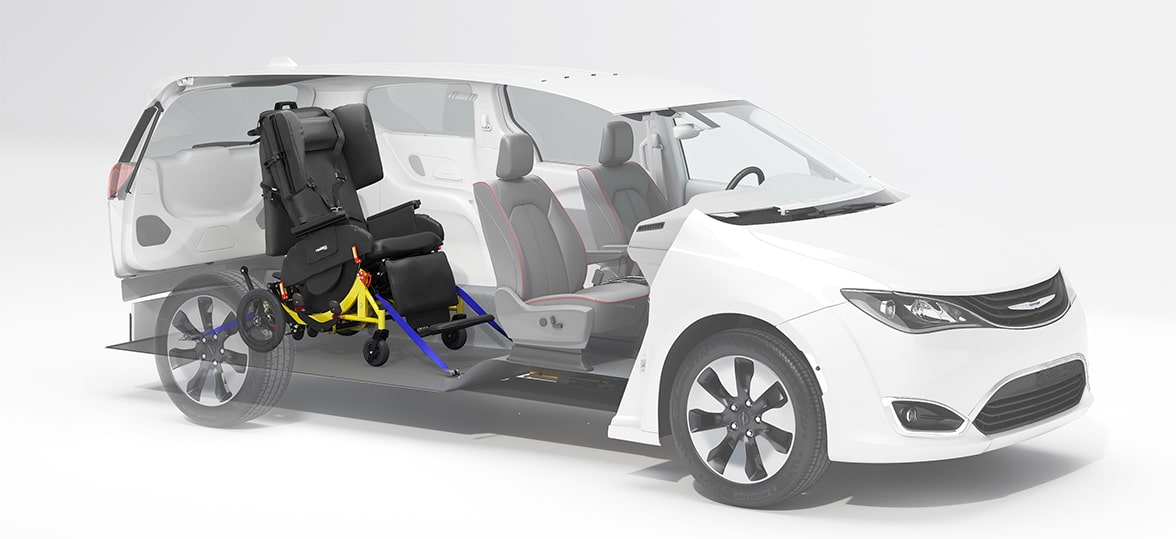Transport wheelchairs provide a means for people with mobility challenges to ride in a passenger vehicle if they are unable to sit in a standard seat. These wheelchairs open a world of possibilities, including the ability to attend necessary medical appointments, visit family and friends, and even go on a road trip if their condition allows.
With so many transport wheelchairs on the market, you would expect them all to provide the same level of safety, but that’s unfortunately not the case. Some so-called “transport” wheelchairs do not have securement brackets and are not even crash-tested to determine their structural integrity. In fact, there are no laws in place that define which wheelchairs can be marketed as safe for vehicle travel. So how do you determine which wheelchairs are safe and which are not? Although there are no laws, there is a set of internationally recognized standards called the WC19 standards. The WC19 wheelchair certification distinguishes whether a wheelchair is safe to use as a seat in a motor vehicle, such as a van or a bus.
Standard WC19, officially known as “Wheelchairs Used as Seats in Motor Vehicles,” was approved by the American National Standards Institute (ANSI) in 2000. The University of Michigan Transportation Research Institute (UMTRI) is responsible for testing individual wheelchair models and certifying them as WC19 compliant. The International Organization for Standardization (ISO) has also created standards for safely using wheelchairs as passenger seats in vehicles.
Despite the existence of all these wheelchair transportation safety standards, they are not legally enforced. Instead, they are voluntary standards that can protect wheelchair users in the event of a vehicle accident during transport. Mobility device manufacturers should follow these standards when manufacturing wheelchairs, although many do not.
7 Elements of a WC19 Certified Wheelchair
Whether you’re choosing a wheelchair for yourself, a loved one, or a non-emergency medical transportation (NEMT) business, be sure to look for the WC19 certification. A WC19 wheelchair will provide a safe and superior transport journey every time. A WC19 certified wheelchair will meet the following criteria:1
- The wheelchair must pass a 30-mph, 2G frontal impact crash test in which all chair components operate as expected without failing.
- The wheelchair must have labels certifying its WC19 compliance.
- The wheelchair must contain four securement points on the frame that are easy to access.
- The wheelchair must have a pelvic belt restraint that anchors directly to the chair.
- The wheelchair must have securement geometry that accepts a securement strap end-fitting hook.
- The wheelchair must be compatible with in-vehicle passenger safety belts.
- The wheelchair cannot have any sharp edges.
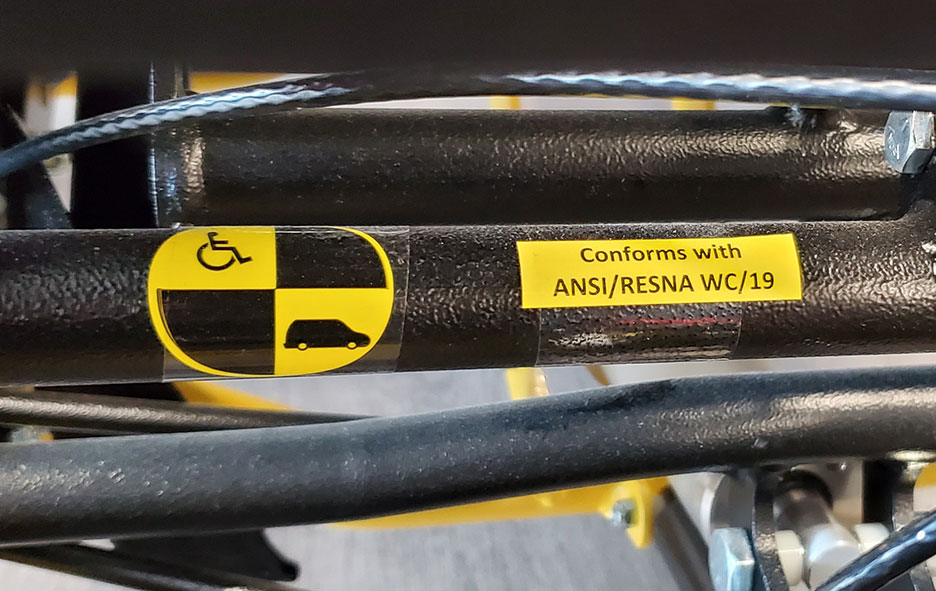
Having a WC19 transport wheelchair certification also means that a manufacturer or supplier can make specific claims about their product’s performance. For example, they can state that WC19 compliant wheelchairs are durable or stable when being used as a seat in a motor vehicle. Additionally, they can also provide assurance to consumers regarding safety features such as brakes, leg supports, IV poles, and other wheelchair accessories.
By having this certification in place, wheelchair manufacturers give NEMT providers and people who regularly travel in wheelchairs peace of mind that their chosen wheelchair has been tested against rigorous safety standards and will provide an acceptable level of mobility for everyday transport.
More Factors to Consider
The WC19 certification is not the only factor you should consider when choosing a transport wheelchair. Think about the following elements when planning your wheelchair transportation.
- Comfort: Consider the seat width, padding, and back support to ensure comfort for the user during extended periods of sitting. Broda wheelchairs feature Comfort Tension Seating™, a unique suspension system offering unparalleled comfort.
- Durability and Build Quality: Check the materials used in the frame and wheels to ensure the wheelchair is sturdy and long-lasting.
- Maneuverability: Evaluate how easily the wheelchair can be maneuvered, especially in tight spaces or over different types of terrain.
- Safety Features: Look for features like secure brakes, seat belts, and anti-tip wheels to enhance safety.
- Adjustability: Some wheelchairs offer adjustable footrests, armrests, and backrests, which can be important for personalized comfort and support.
- Weight Capacity: Ensure the wheelchair can support the user’s weight comfortably.
- Ease of Use: Consider how easy it is to operate the wheelchair, both for the user and the caregiver.
- Cost and Warranty: Compare prices and check if there is a warranty or service plan available. Broda offers an unbeatable 10-year warranty on all wheelchair frames and a 2-year warranty on parts.
- User Reviews and Recommendations: Research user reviews and seek recommendations to gauge the experiences of others with the same model.
Looking for a WC19 Certified Wheelchair for NEMT?
If you operate an NEMT business, look no further than the Traversa Transport Wheelchair by Broda. The Traversa is crash-tested and the most comfortable and versatile transport wheelchair on the market. Supporting users up to 450 lbs., the Traversa is easy to maneuver, simple to use, and comes highly recommended by NEMT operators across the United States and Canada!
In conclusion, obtaining a WC19 transport wheelchair certification is an important distinction for both manufacturers and consumers alike. It certifies that a manufacturer has taken the necessary steps to ensure their product meets certain safety standards for vehicle travel. This type of certification provides assurance that a wheelchair is safe and reliable.
To find the WC19 certified Broda wheelchair that’s right for you, contact our team at 844-552-7632 or sales@brodaseating.com.
References
- Buning, M. E., Bertocci, G., Schneider, L. W., Manary, M., Karg, P., Brown, D., & Johnson, S. (2012). RESNA’s position on wheelchairs used as seats in motor vehicles. Assistive Technology: the official journal of RESNA, 24(2), 132–141.
